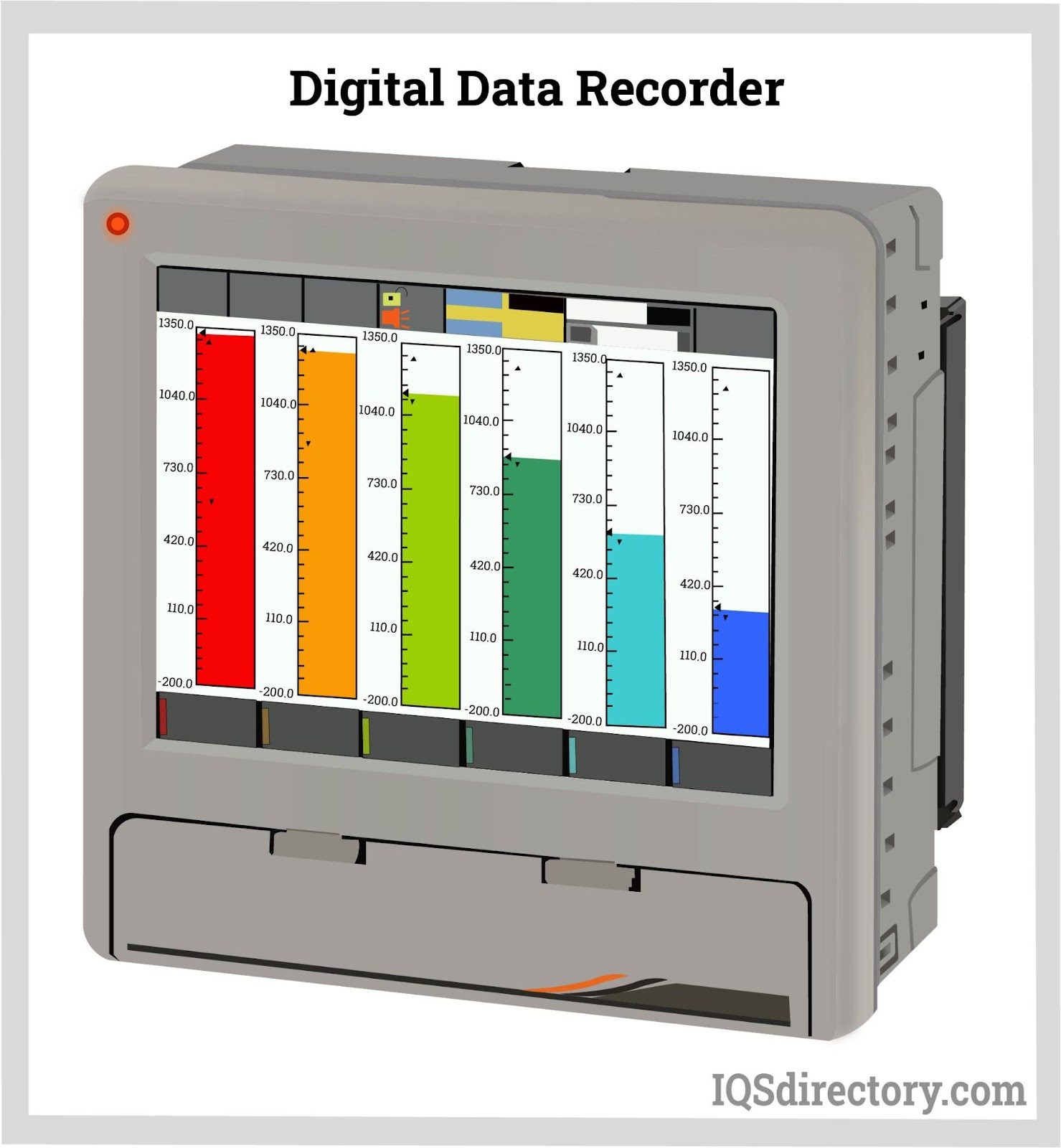
This article will take an in-depth look at data acquisition systems.
The article will bring more information to topics such as:

This chapter will explore the fundamentals of data acquisition systems, including their components and measurement processes.
A data acquisition system is an integrated setup consisting of sensors, measurement devices, and a computer. It is utilized for gathering and processing data to analyze electrical or physical phenomena, enabling a comprehensive understanding of the collected information.
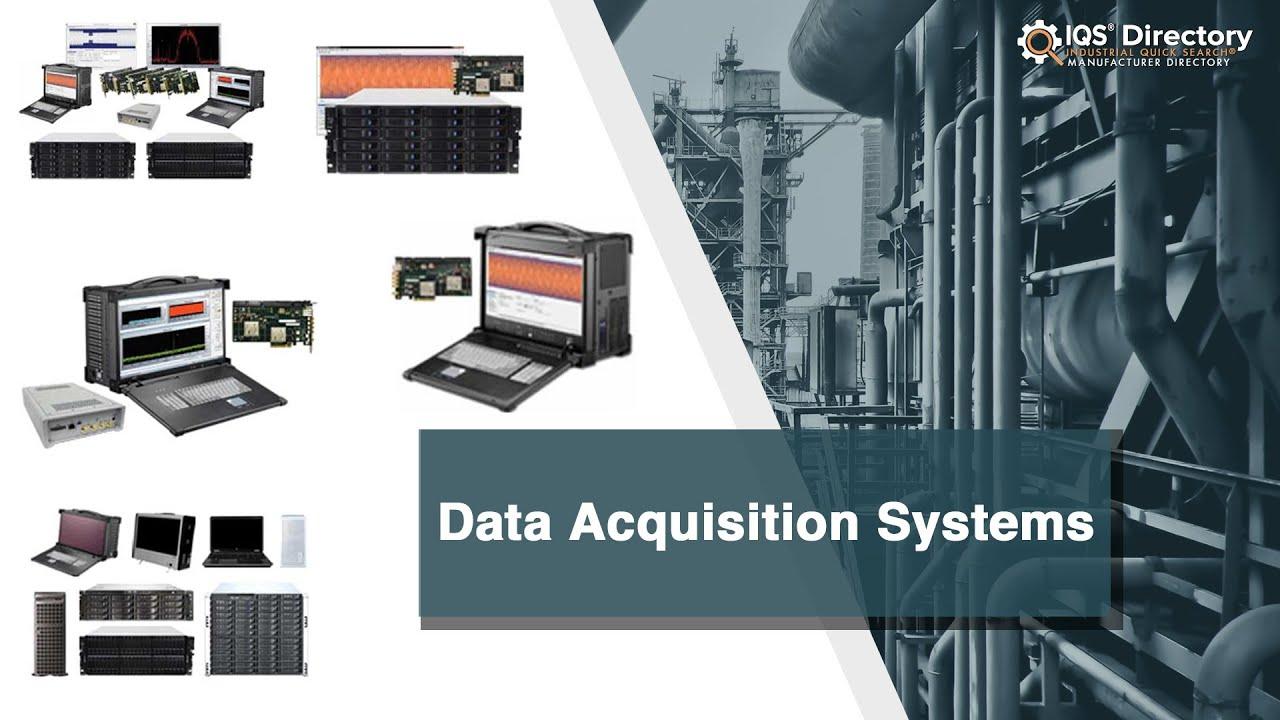
Understanding how a data acquisition system operates involves examining how it processes and records data. For instance, a data acquisition system can be used to test the temperature of a heating coil that heats an object to a specific temperature. The effectiveness of the heating coil is assessed by measuring its temperature. This process of measuring and recording temperature is known as data acquisition, facilitated by the data acquisition system. Similarly, data acquisition systems are used to measure and record the voltage drop across an electrical resistor.
The primary purpose of measuring and recording electrical and physical phenomena with a data acquisition system is to enable detailed analysis. Data acquisition systems utilize software to perform their tasks and can quickly process and store data in various formats. These systems capture data from real-world systems and store it in a format that is readily accessible for further engineering or scientific analysis.
Data acquisition systems can be either handheld or remotely operated. Handheld systems are used when direct physical interaction with the specimen is possible. In contrast, remote data acquisition systems are employed when direct human interaction with the object is impractical or unnecessary, allowing for measurements to be taken from a distance.
The process of data collection begins with identifying the physical phenomena or characteristics to be measured. Examples of such factors include temperature, light intensity, vibration, gas pressure, fluid movement, and force. Regardless of the physical property being measured, it must first be converted into a format that a data acquisition system can sample.
This conversion is achieved through sensors. A data acquisition system, comprising both software and hardware, is designed to measure or control physical properties in the real world. A complete data acquisition system typically includes DAQ hardware, sensors, actuators, signal conditioning equipment, and a computer running DAQ software. Additionally, if precise timing is crucial, an independent timing system may be required, especially in event-mode DAQ systems.
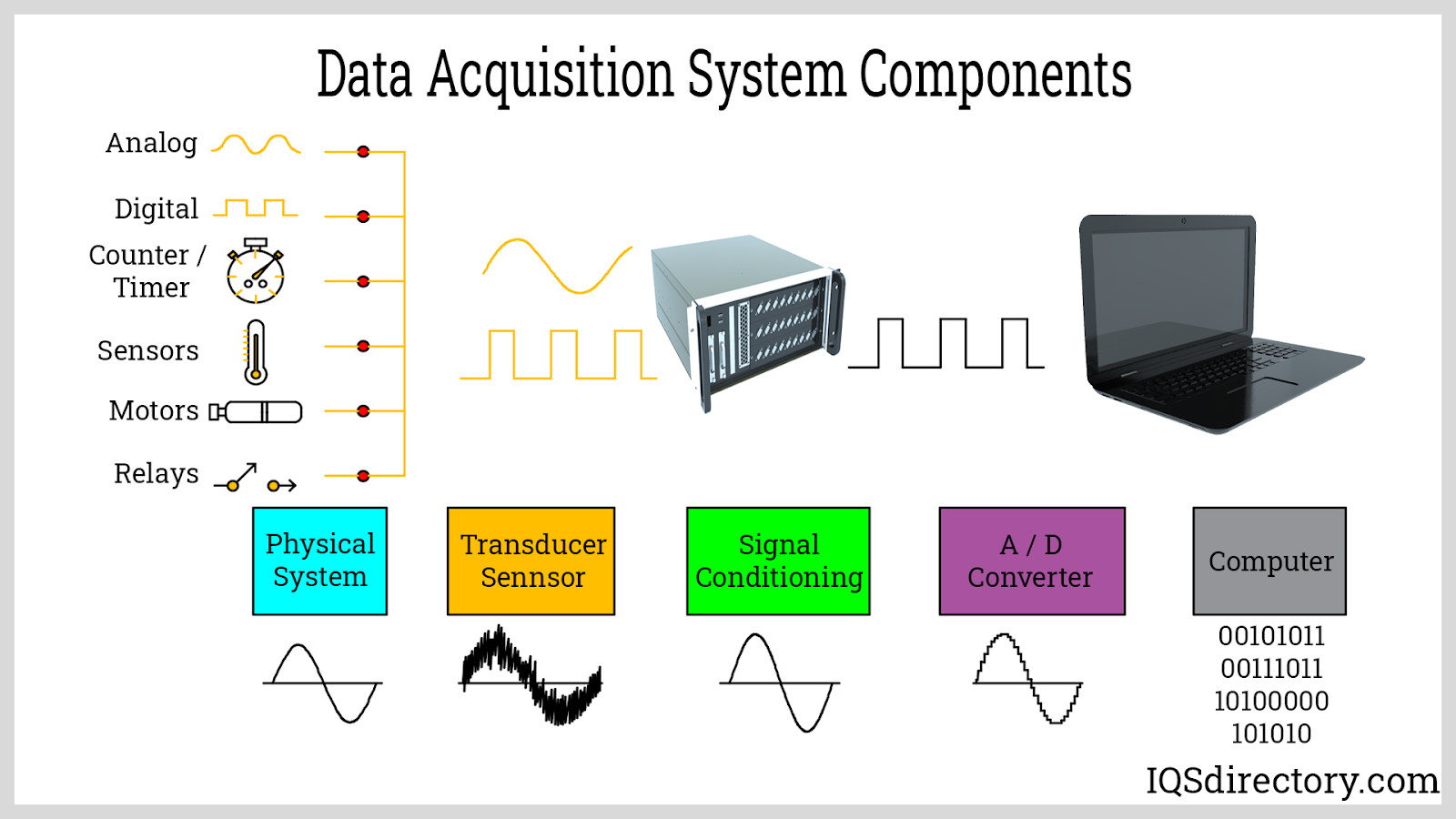
Sensors or transducers serve the purpose of interacting with the subject measured. They interact with the subject either directly or indirectly, or as defined in other words, contact or non-contact. These tools convert the physical values to produce an output of electrical signals. There are many different types of sensors that are utilized in data acquisition systems depending on the nature of their application. For instance, when the temperature is being measured, a temperature sensor is used, but when measuring light, a photovoltaic sensor is used.
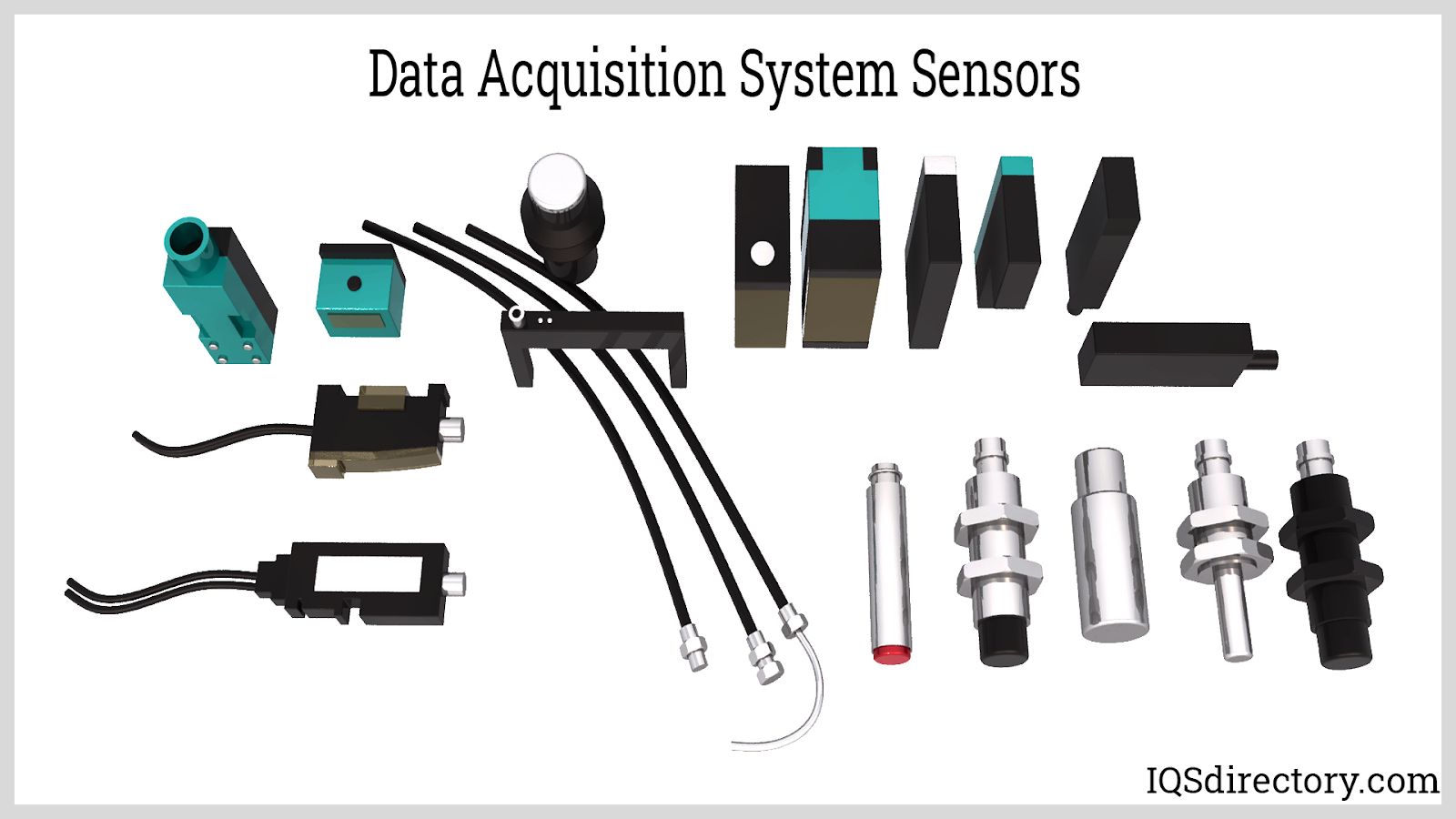
These tools share a common purpose: converting analog signals—such as temperature, light, and speed—into digital signals that can be processed by a computer. The sensors used in DAQ systems are high-quality components designed to provide accurate readings with minimal noise or interference.
The electrical signals obtained from sensors often contain noise or interference and may require modification before they can be used. Additionally, these signals might be too weak for the data acquisition system to measure accurately. To address these issues, additional circuitry, known as a signal conditioner, is employed. Signal conditioning is the process of enhancing and optimizing these signals to ensure accurate measurement and reliable data acquisition.
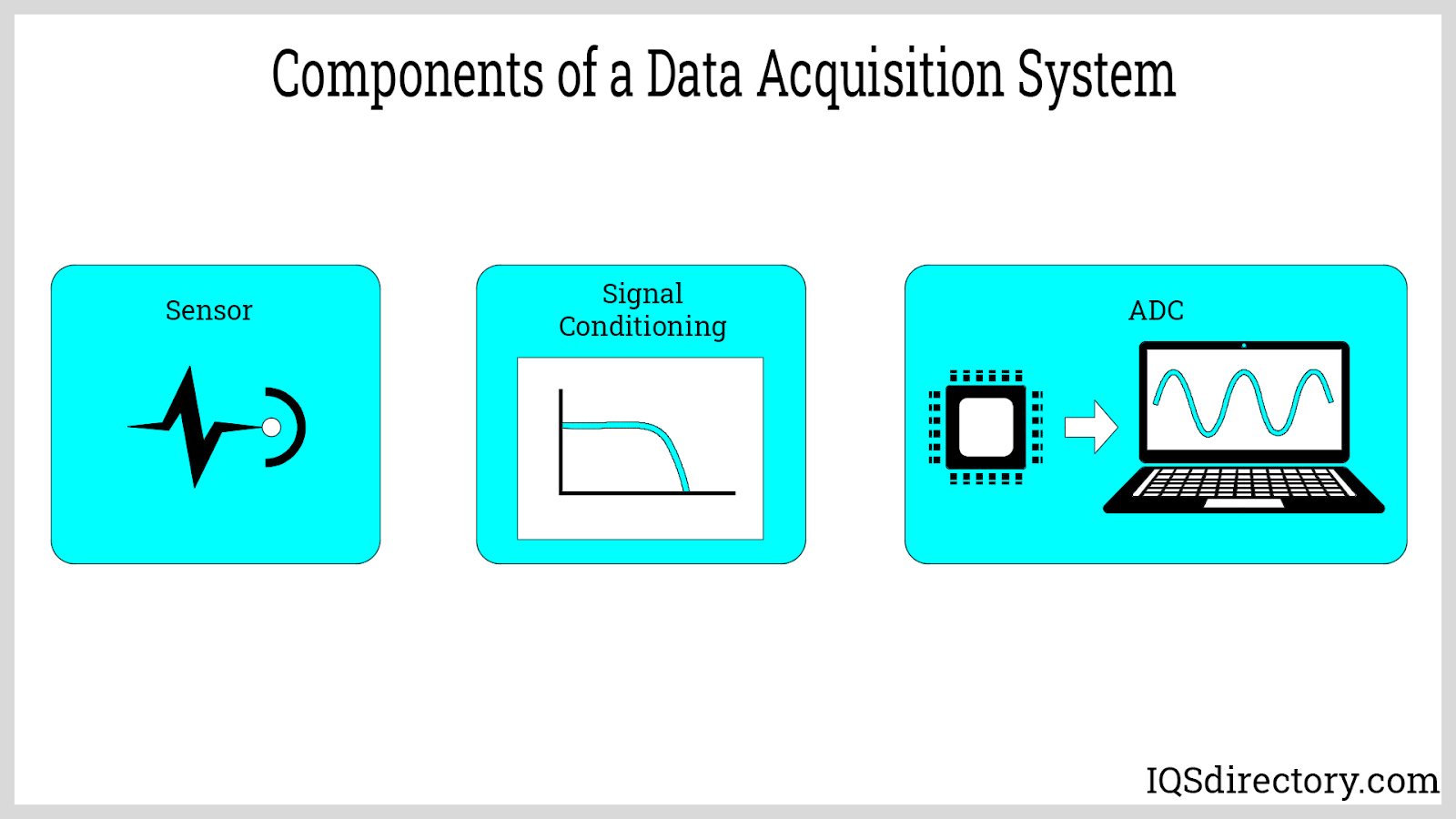
The signal conditioner employs filter circuits to separate noise from the actual signal and amplification circuits to boost weak signals. These are among the primary functions performed by signal conditioners. Additionally, a well-designed signal conditioning circuit can handle other processes such as linearization, calibration, and excitation. The choice of signal conditioning circuit depends significantly on the characteristics of the sensors used in the DAQ system.
Data acquisition hardware acts as an intermediary between sensors and the computer. It connects to the computer via USB ports or PCI-express slots on the motherboard. This hardware is responsible for receiving signals from the sensors and converting them into digital signals that the computer can interpret. Essentially, this hardware enables the computer to process and analyze the data collected by the sensors.
This component of a DAQ system, known as the Analog-to-Digital Converter (ADC), is crucial for converting analog signals into digital data. At the heart of every data acquisition system, the ADC transforms environmental data into discrete levels that a processor can interpret. These discrete levels correspond to the smallest detectable changes in the measured signal.
The resolution of an ADC is determined by its bit depth. A higher number of bits allows for more discrete levels, which improves the resolution of the analog-to-digital conversion. Essentially, the resolution of an ADC is similar to the precision marks on a measuring stick.
For example, a metric ruler with millimeter markings provides finer resolution compared to one with centimeter markings. Similarly, in the U.S., a yardstick marked in inches offers greater resolution than one marked only in feet. The level of resolution needed depends on the specific measurement requirements, just as the ADC resolution must be chosen based on the application's needs.
This component of a DAQ system is responsible for facilitating the input and output of binary signals. It ensures that digital data can be effectively transferred between the system and external devices or components.
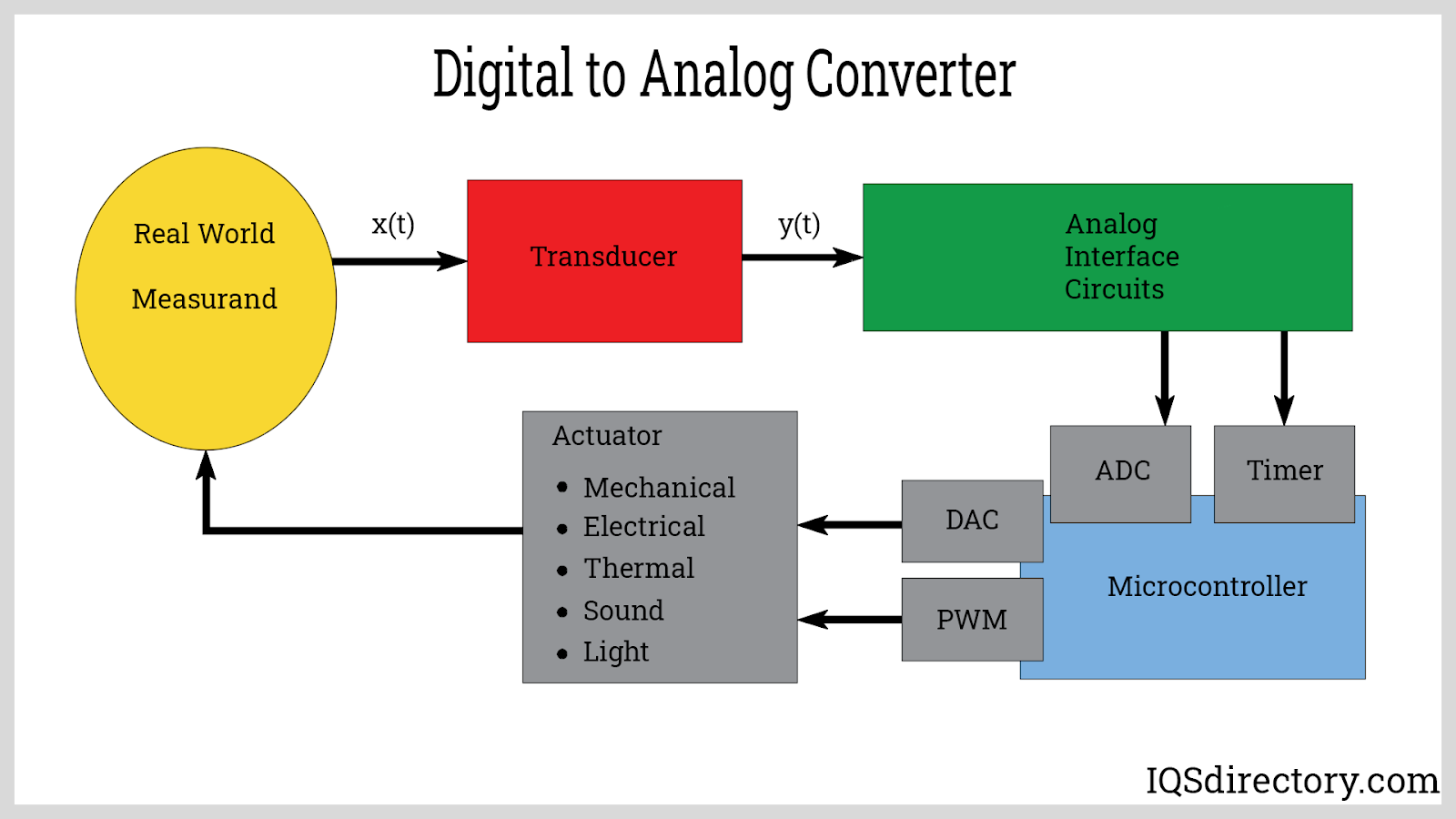
This component is designed to support the input from single-ended wires, facilitating the connection and measurement of signals.
Some DAQ hardware operates independently of a computer. These standalone systems include an embedded processor and computing unit within the hardware itself. Such standalone data acquisition systems can provide real-time data representation without needing to connect to a computer. Examples of standalone DAQ systems include oscilloscopes and data loggers, which are used for measuring and recording specific information without external computing resources.
The sampling rate, also known as frequency (F), is influenced by the characteristics of the process being monitored and practical considerations. In digital data acquisition, transducers convert continuous analog signals into digital form for computer processing. Since computers cannot store continuous analog waveforms, they divide the signals into discrete samples. The sampling rate, measured in hertz, refers to the number of samples taken per unit of time from a continuous signal.
The sampling rate is a crucial factor in interpreting trends accurately. If the sampling rate is too low, significant trends might be overlooked or obscured. In the past, limitations in computer storage and memory were a common concern, but modern computers typically have ample resources to handle high sampling rates.
Understanding sampling rates is vital for effective data acquisition. Clients often require high sampling rates for short-term tests to capture rapid changes. For long-term analyses, sampling rates of one second or less are preferable, with data storage methods varying according to the client's requirements.
The computer serves as the final component in a data acquisition (DAQ) system. Its primary role is to collect and process the data received from the DAQ hardware for further analysis. Simply connecting the DAQ hardware to a computer is not sufficient to interpret the collected data. Specialized DAQ software is necessary to convert the raw data into readable and meaningful results. This software acts as an intermediary layer between the DAQ hardware and the user, enabling the computer to perform advanced computations and analyses based on the collected data.
This chapter will explore the measurements, modules, and methods utilized in data acquisition systems (DAQ). It will provide an overview of how data is collected, processed, and analyzed within these systems, including the key components and techniques that enable accurate and efficient data acquisition.
Data acquisition systems are designed to handle a wide range of measurements, typically originating from analog signals. To be processed by a computer system, these analog signals must first be converted into a digital format.
Data acquisition systems can measure a variety of parameters, including but not limited to the following:
Data acquisition systems often use separate modules or sensors for measuring specific parameters. However, many multi-input, general-purpose data acquisition devices can interface with various sensors. These sensors typically provide voltage readings, which can be converted into measurements of parameters such as temperature, displacement, or other variables being studied.
In many cases, a data acquisition module and sensor will use a transducer to produce a base measurement parameter—usually voltage. This primary measurement is then converted into additional parameters as needed. This capability allows data acquisition modules to measure a wide range of parameters.
Consequently, there is a vast array of DAQ modules available that can measure nearly any parameter and meet specific requirements. Additionally, for specialized needs, sensor designs that require custom DAQ modules can be developed, allowing for tailored solutions to specific measurement requirements.
Many data acquisition systems utilize rack-mounted modules filled with various cards to provide the necessary measurement functions. These cards must conform to the system's electrical and mechanical interfaces. Rack systems are often standardized, and the modules are commonly available from multiple manufacturers, making the selection process more convenient.
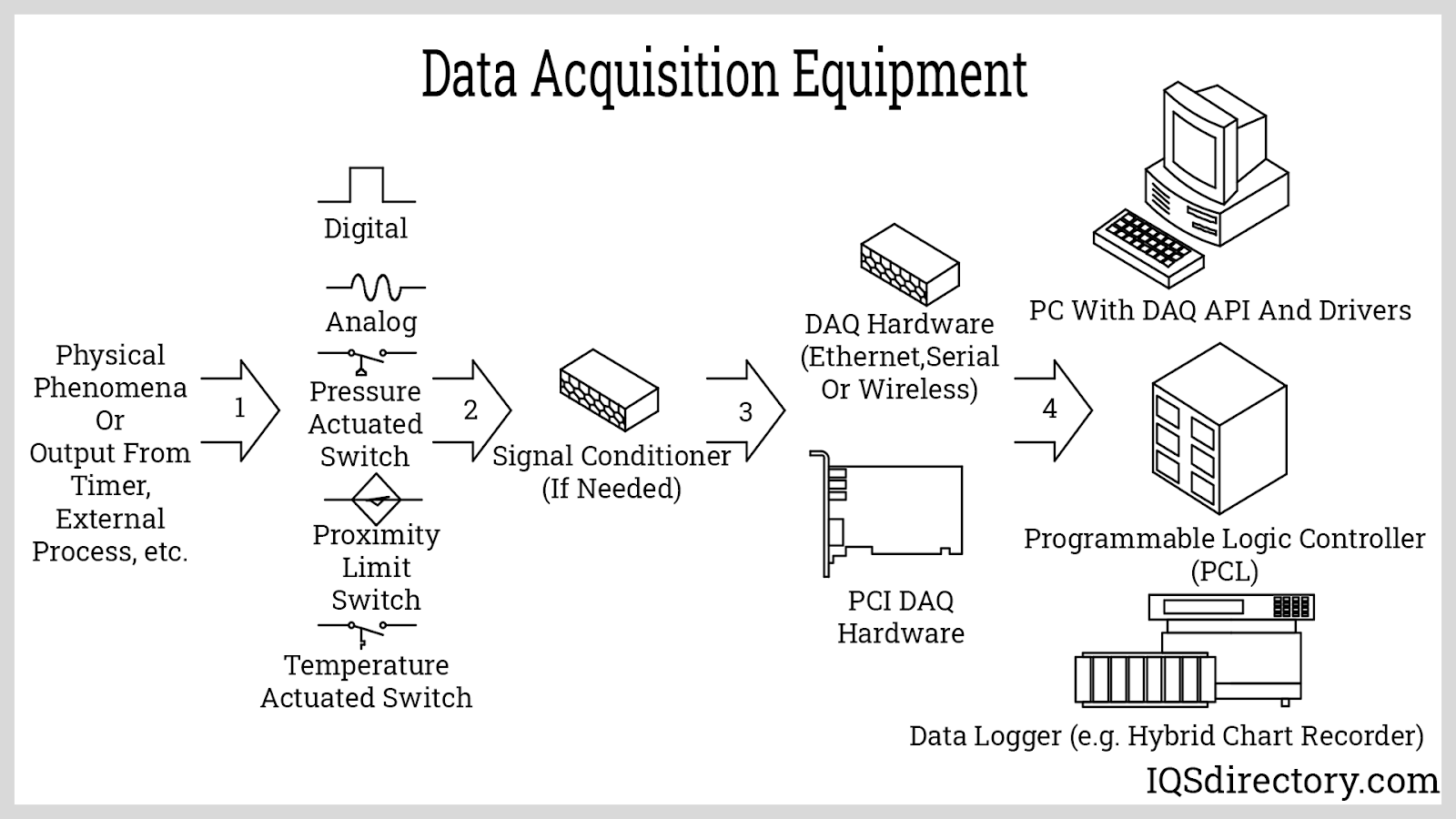
Specialized data acquisition software is essential for acquiring, storing, and processing data in a logical format. This software can be developed in various programming languages and tailored for specific applications. Alternatively, many pre-existing data acquisition software packages are available for use.
Proprietary data acquisition software packages offer the advantage of pre-existing development and deployment, meaning most common issues have already been addressed. Although there may be costs associated with software maintenance, these are generally lower than the costs of maintaining a custom-built system.
As a result, most companies opt to purchase data acquisition software and use it to develop tests suited to their specific needs.
Transducers are electronic devices that convert energy from a particular source into an electronic signal. The nature of the output signal from a transducer depends on the specific variable the DAQ system is designed to measure. Data acquisition systems are often categorized based on the type of output signal they produce, which can be either digital or analog.
Various methods are employed in data acquisition systems to gather and process data. These techniques include:
This data acquisition approach is employed in specialized systems, particularly by forensic experts. It is a versatile technique that enables the duplication of an original drive, creating one or more exact copies. Crucially, it captures all data from the original drive, including connected sectors or clusters, which helps recover files that may have been deleted or altered. Common tools used for this process include EnCase, X-Ways, FTK, and ILook Investigator, among others.
In cases where generating a bit-stream disk-to-image file is not feasible due to software or hardware problems or compatibility issues, a bit-stream disk-to-disk method is utilized as an alternative. When forensic investigators encounter difficulties with older drives, they opt to produce a bit-stream disk-to-disk replica of the original drive. Tools such as EnCase, SafeBack, and Norton Ghost are commonly used for this purpose. These tools can adjust the geometry of the target disk to align with the data copied from the original drive.
This approach is employed to collect only the files pertinent to a specific case investigation. For instance, it is used to gather Outlook .ost or .pst files in email investigations or to retrieve particular records from a large RAID server.
This technique is akin to logical acquisition. It allows investigators to gather fragments of unallocated data. This approach is typically used when a full drive examination is not required.
When configuring data acquisition systems, several factors should be taken into account:
First and foremost, it's crucial to determine how long you need the data acquisition system to run continuously. This duration will significantly impact your choice of hardware and operating system. A prolonged operation increases the risk of buffer overflow, which may lead to data backup issues and errors if the processor is unable to keep up. Additionally, extended use can cause wear on the system's hard drive and battery, potentially leading to failure over time. Therefore, the initial consideration should be the operational lifespan of the DAQ system. Once you establish this, you can then evaluate other factors necessary for selecting the most suitable system for your requirements.
The power source is the next item to think about. You must determine if the system will have access to a reliable power supply or if the DAQ system will require a secondary power source. Choosing a secondary source is obviously less of an issue the more reliable the primary power source may be. Some common back-up power sources include generators, batteries or solar panels. Where multiple, reliable energy sources are available, performing power calculations is advisable; when doing so, it is best to be cautious and monitor power when working under actual conditions.
Next, consider how the data will be transferred from the system. Determine whether the data acquisition system needs to store data locally or transmit it remotely from the field or facility. It's important to assess the required storage capacity for the data collected. Additionally, decide if the system should have the capability to store and forward data—buffering the information when the connection is lost and resuming transmission once the link is restored.
When setting up a data acquisition system, clearly specify whether remote access will be needed before finalizing the configuration or verifying its operation. In the current trend of remote work, it's prudent to design a data collection system that allows for remote access. You may also need the capability to adjust the system’s acquisition settings from a distance.
Before configuring a data acquisition system, determine whether you only need to collect raw data or if you require processing or analysis of the data post-acquisition. This consideration is crucial when selecting the right data collection system. If the sole requirement is data collection, a basic setup may suffice. However, if your needs include specific data processing tasks such as filtering or windowing, you will need a system equipped with a CPU to handle these specialized functions.
Lastly, it's essential to evaluate your input channel's performance. Ensure that the input channel meets your requirements effectively by considering several key factors: the sampling rates, the type of data you need from the signals, the synchronization of these signals, and the range of signal types you are measuring. Addressing these elements will guide you in choosing the most suitable data acquisition system for your needs.

This section will explore various types of data collection systems and the signals they use.
Different kinds of data collection systems are as follows:
Data logging involves recording information over a specified duration. Typically, data loggers are compact devices designed to measure relatively small signals. These systems are often used for long-term data collection.
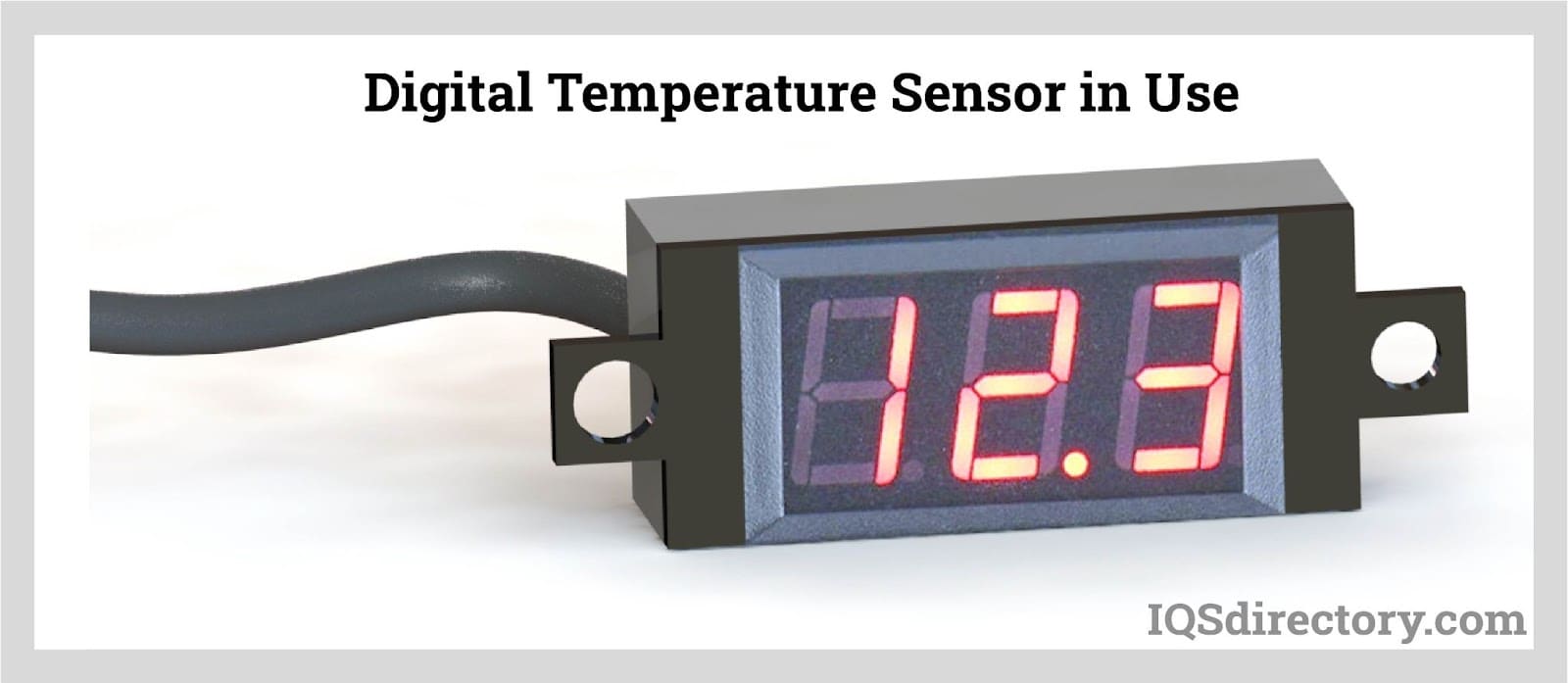
Based on the application, the data can include readings of voltages, temperatures, humidity, currents, or other relevant signals. Data loggers are standalone systems equipped with integrated processors and pre-installed software.
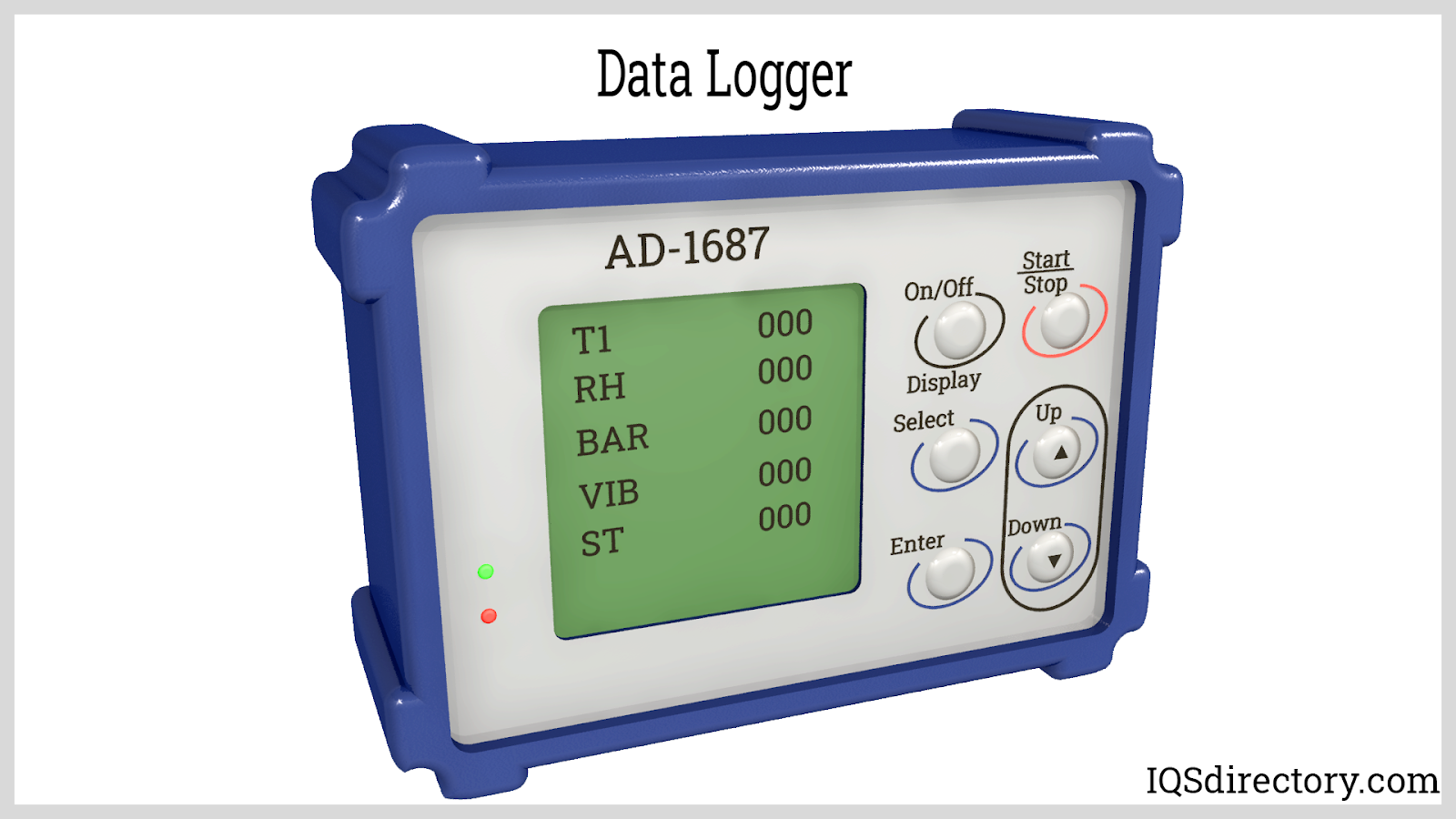
A data logger can operate independently as a standalone unit. Its popularity stems from its portability and simplicity for specific tasks. Each data logger has built-in storage for data retention, with some models featuring SD (secure digital) card slots for expanded memory using memory cards. Data can be gathered and stored temporarily on the logger, then transferred through a data link (such as a removable memory card) at regular intervals. Additionally, some web-enabled data loggers can be set up to share data directly over a network.
Some data loggers are battery-powered for additional portability. By definition, a data logger will consist of a more limited set of inputs and tend to have a more basic format like the already mentioned signals including temperature, current, voltage, etc. Data loggers can also be used for the collection of geological data for long-term monitoring of many items.
Data acquisition devices feature signal conditioning circuitry and an analog-to-digital converter but must be linked to a computer to operate. They are favored for their versatility and broad applicability. These devices are more intricate than simple data loggers but less complex than comprehensive rack-based DAQ systems. Typically, data acquisition devices use single units to connect all sensors, forming a complete DAQ system.
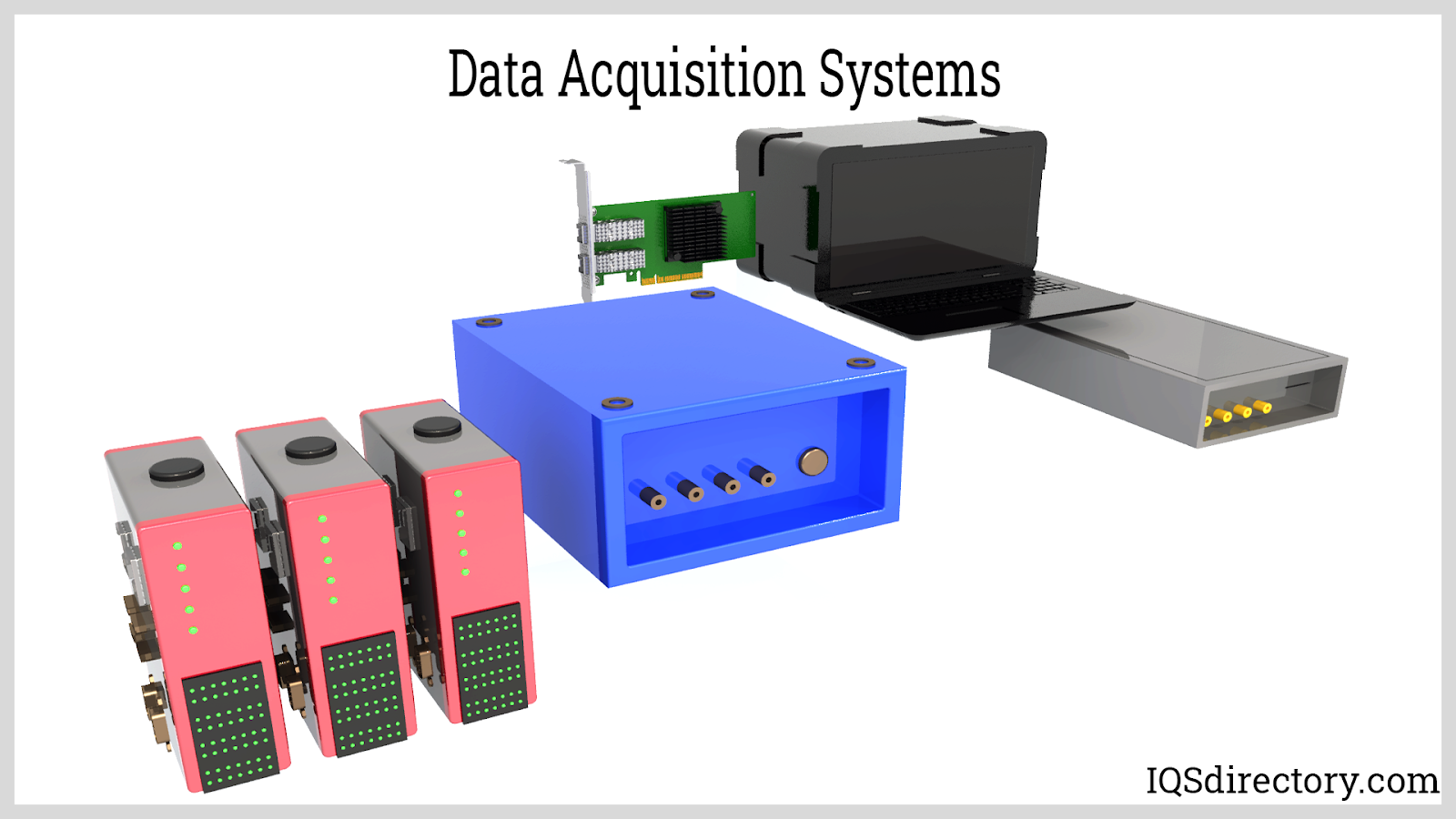
Data acquisition devices offer greater functionality than data loggers while being more affordable than full rack-based systems. Many of these devices are USB-based, and some can be plugged in for data acquisition tasks. Users can opt for pre-configured data acquisition software like DAQami or utilize programming environments such as C++, MATLAB, Python, and DASYLab. These devices provide a flexible and customizable solution for specific needs, with various BUS options and the capability to integrate into larger data acquisition systems.
Modular data acquisition systems are tailored for applications with high channel counts and complex requirements, accommodating numerous input channels and various types of sensors that need to be integrated and synchronized. They are used in more challenging scenarios where complexity and flexibility are crucial. Although these systems are the most costly option, they offer unique features and capabilities, such as those found in PXI systems, that are essential for performing intricate functions.
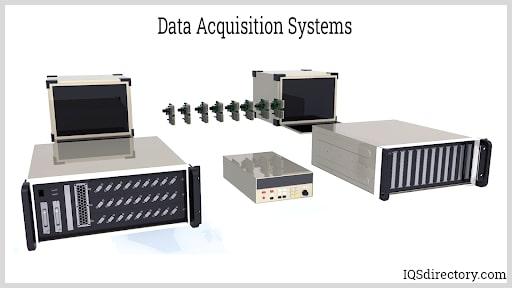
These DAQ systems are capable of performing both static and dynamic measurements, allowing for both low-speed and high-speed sampling.
Typically, modular data acquisition systems are paired with a high-performance computer to meet their demanding requirements. This computer can be either integrated into the system or connected externally. While these systems provide robust and flexible performance, they also come with a higher price tag. Modular data acquisition systems can be found in larger rack configurations, though many compact versions are also available.
Examples of data acquisition techniques include:
Voltage signals are among the most frequently used with DAQ systems. Devices such as strain gauge bridge circuits, thermocouples, and gas concentration sensors generate voltage signals. The data acquisition hardware processes these signals and uses an analog-to-digital converter to transform them into digital values, which are then stored by the computer. DAQ systems are typically capable of directly handling low-voltage inputs ranging from a few millivolts to several volts.
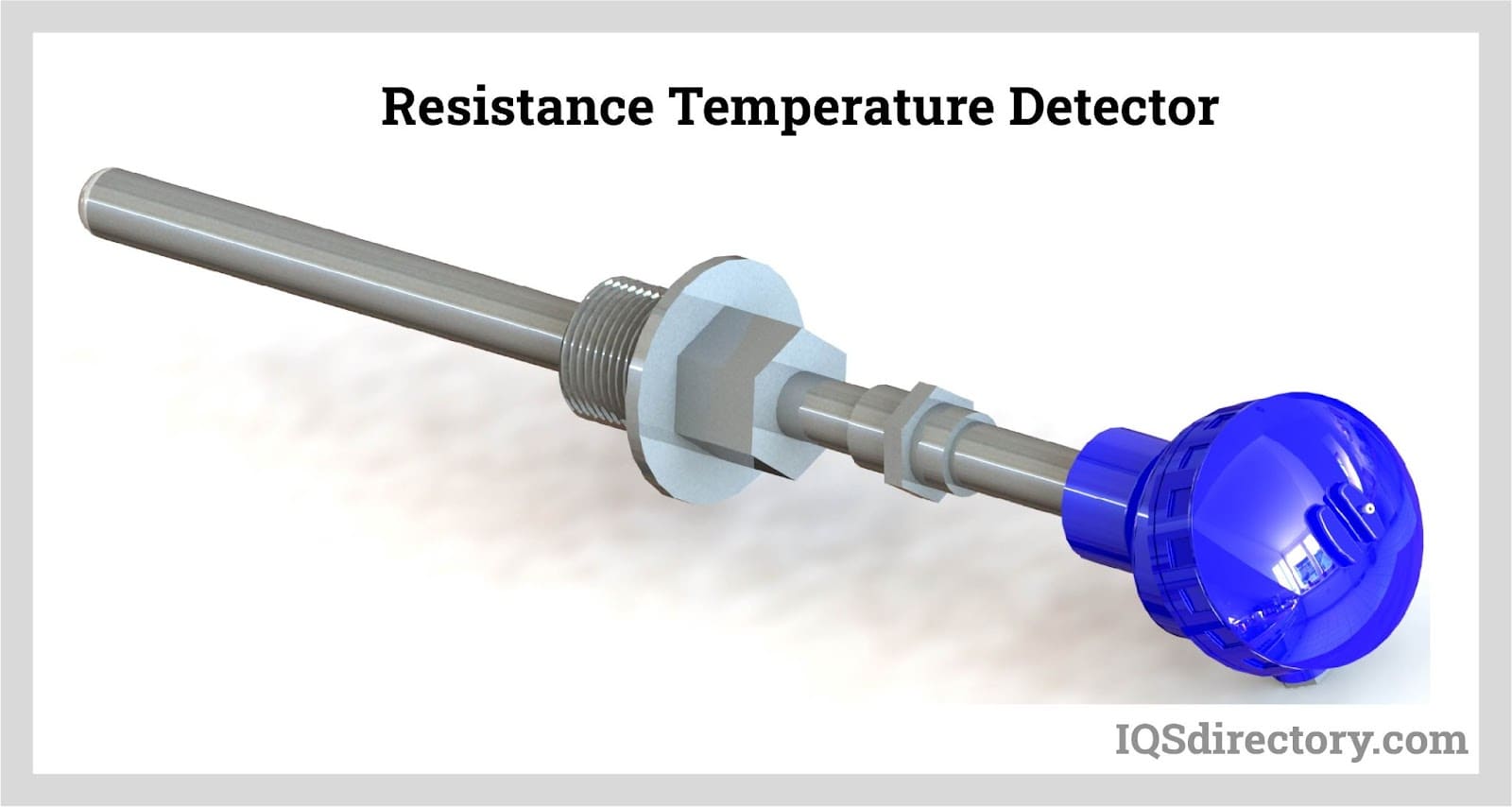
Current is commonly employed for signal transmission in noisy environments due to its reduced sensitivity to background noise. The data acquisition system measures the current flow and records the value in a computer for further analysis.
Electrical power supply signals can be monitored by using a current-sensing resistor to detect current and resistive dividers to scale down high voltage signals. The data acquisition system measures and stores the data from the current-sensing resistor, enabling the monitoring of power signals.
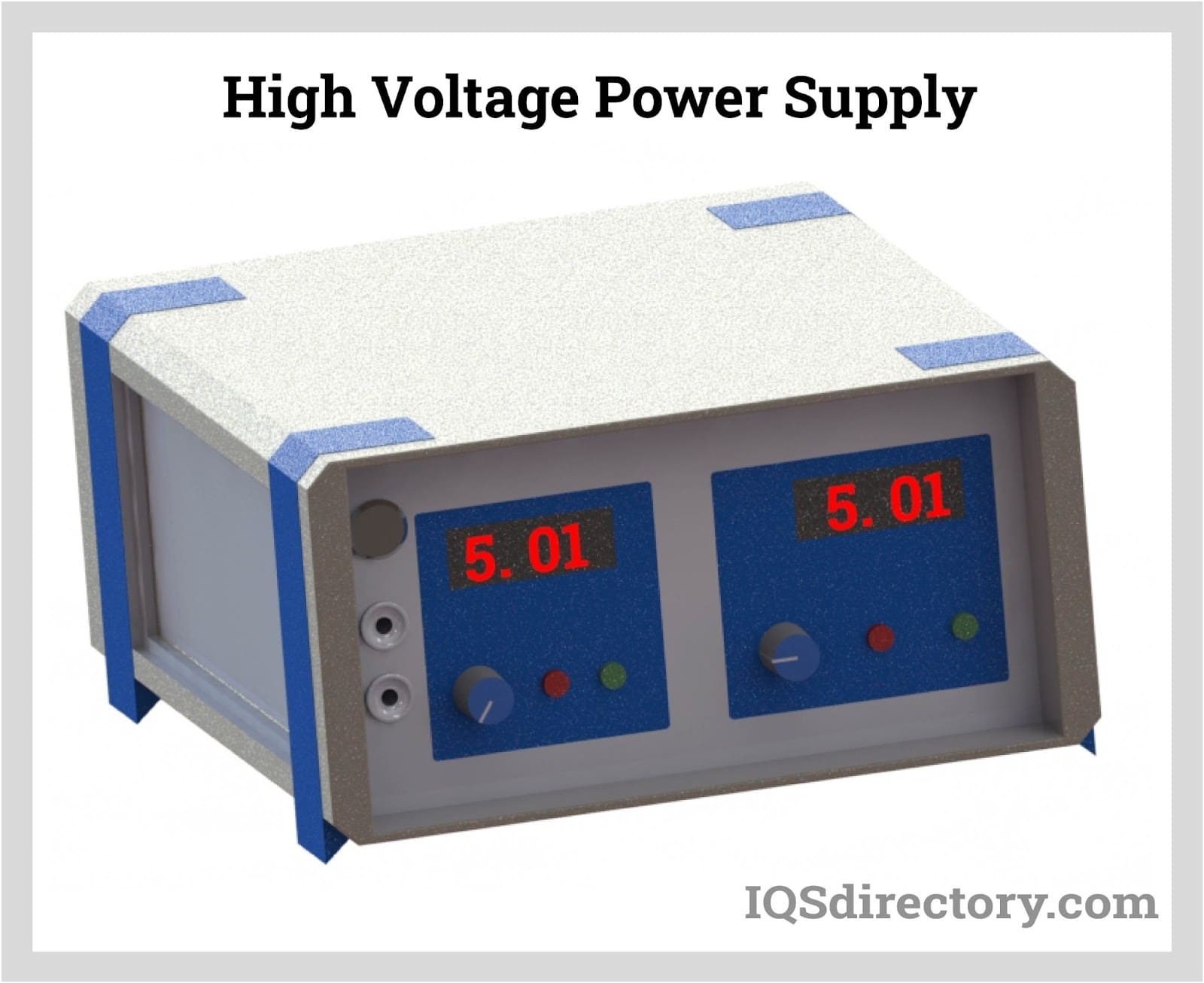
Instead, the voltage produced by a thermocouple is influenced by the temperature difference between the junction where the two different metal wires meet and the temperature at the cold junction, where the wires end.
These sensors generate a low voltage signal, usually in the millivolt range. The correlation between this voltage and temperature is nonlinear.

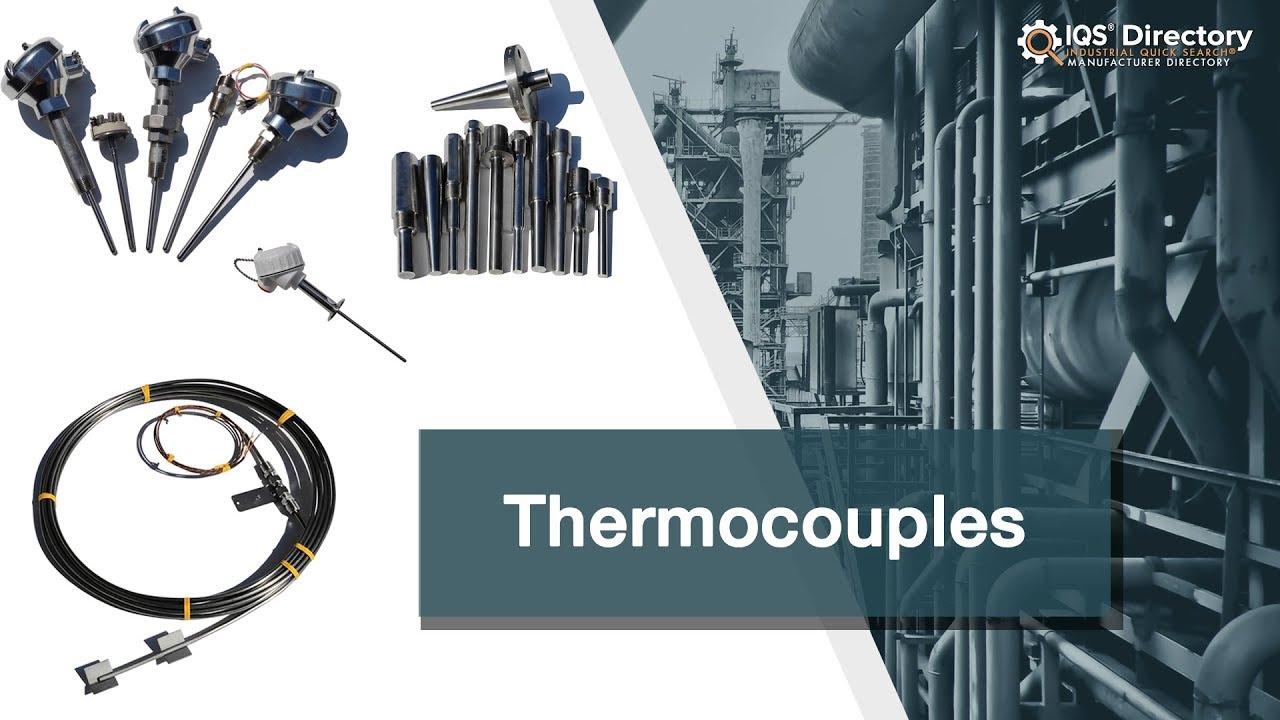
The precision of a thermocouple depends on its specific type.
Resistance measurements are taken using a current source along with a standard voltage input. The current passes through an unknown resistance, and the resulting voltage drop across the resistance is measured. This voltage drop is then recorded by the data acquisition system.
Strain gauge bridges are a specialized method for resistance measurement. They function based on the principle that electrical conductance depends on the conductor's geometry. A Wheatstone bridge setup is used to measure the gauge's resistance, which changes as the gauge is deformed by applied strain. The system detects small variations between the two circuits of the Wheatstone bridge.
As a result, strain measurements often focus on detecting deviations from initial values rather than absolute measurements. Knowing these initial values is crucial, as they may be significantly larger than the changes caused by strain-induced bridge imbalances. To capture these small changes accurately, a high-resolution analog-to-digital converter is used to provide the necessary dynamic signal range.
Digital outputs from devices like switches are interpreted as logic signals, being detected as either on (1) or off (0). For volt-free contacts, where no external voltage is switched, a small sensing voltage, typically 5V to match TTL levels, is used to determine the switch state. When external voltage is switched, the logic state is identified by the voltage level itself, such as TTL, up to 12V logic, or 24V DC. For rapidly changing digital signals that form pulse trains, counter-timer inputs should be used.
This chapter will explore the uses and advantages of data acquisition systems.
Data acquisition systems are employed in the electronics industry to test various parameters involved in electronics design, such as heat generation, resistance, conductivity, and magnetic properties.
In automotive manufacturing, data acquisition devices are used to assess the quality of produced parts.
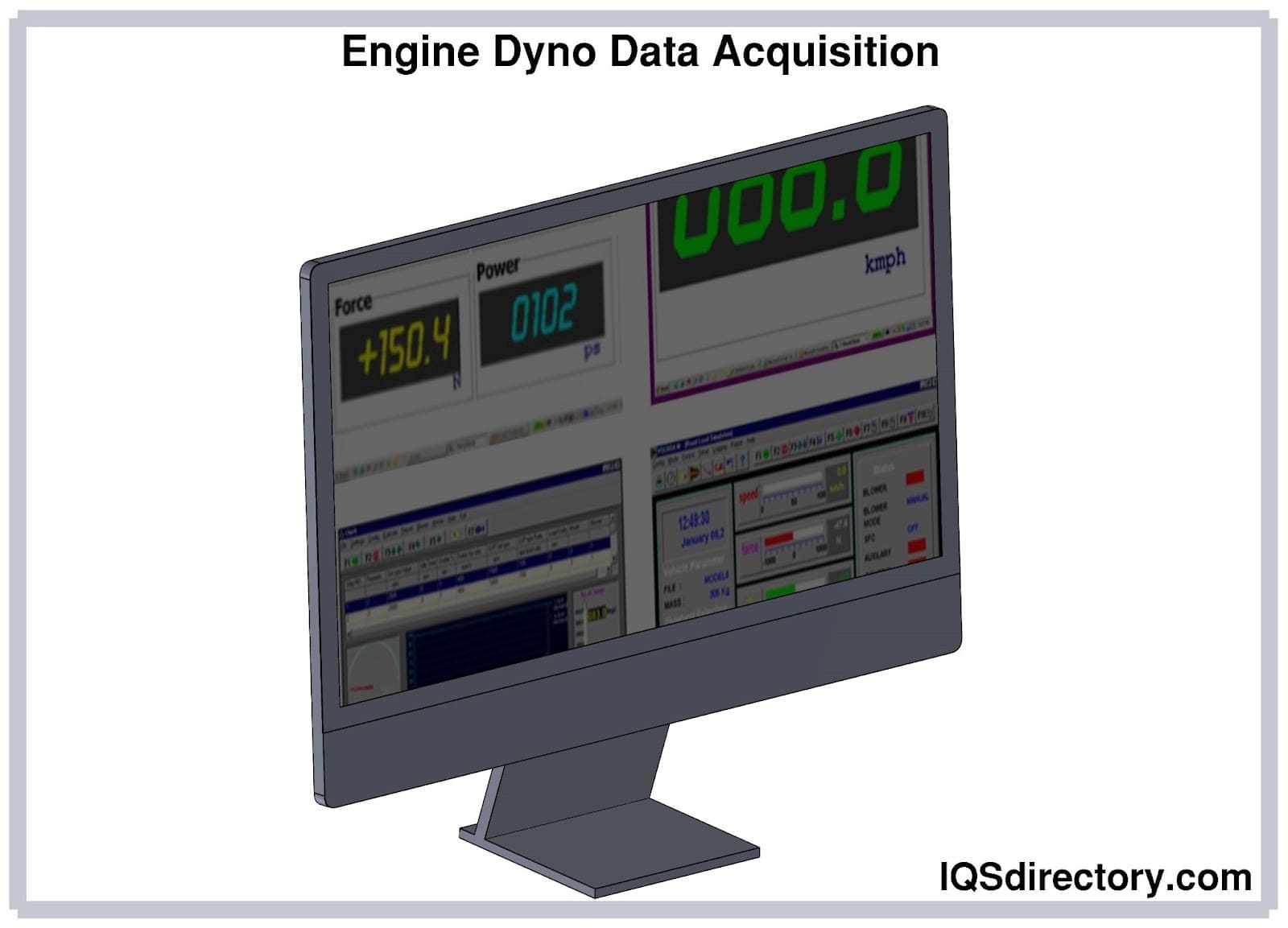
Data acquisition systems are employed to perform quality testing on imaging equipment, such as photographic lenses and video cameras, as well as on scientific instruments like scanners and microscopes.
In laser technology, data acquisition systems are used to evaluate laser performance, light intensity, and color.
In radar and sonar applications, data acquisition systems employ remote sensing technologies to assess their efficiency and performance.
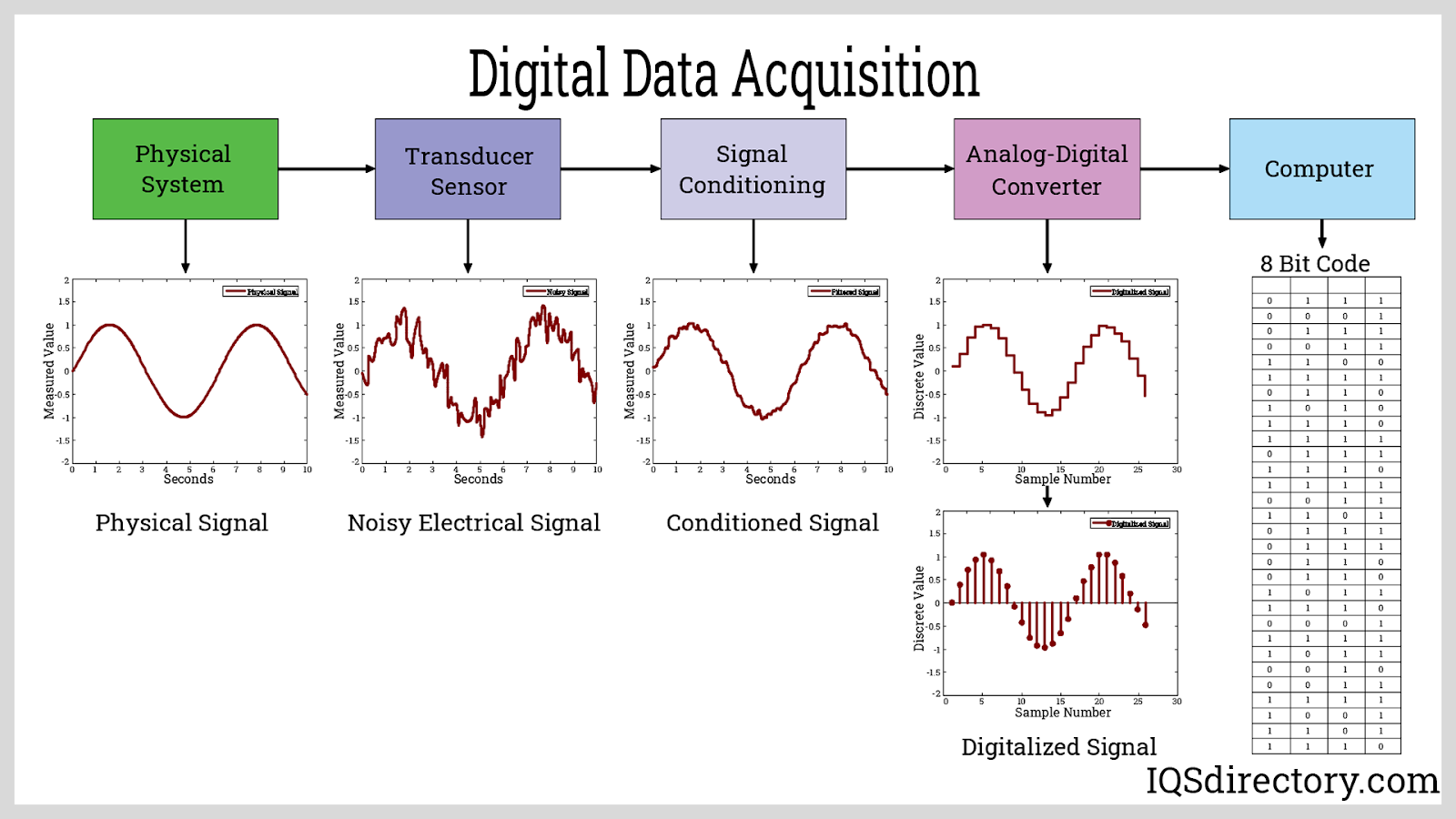
Industrial machines are designed for repeated use, making repeatability crucial. Data acquisition systems are frequently used to test these machines for their tolerance to repetitive forces.
Data acquisition systems are used in non-destructive testing of structures, geological studies, seismology, ultrasonic measurements, and the analysis of acoustic emission phenomena.
Gas detectors are used to find leaks using tracer gases, such hydrogen and helium. Once a chamber is filled with the trace gas, the loss of gas is measured with a mass spectrometer that detects the trace gas. Gas detection is used to determine the amount and composition of the gas being lost from a system or machine.
Benefits of data acquisition systems include:
Data acquisition systems enhance the precision of measurements.
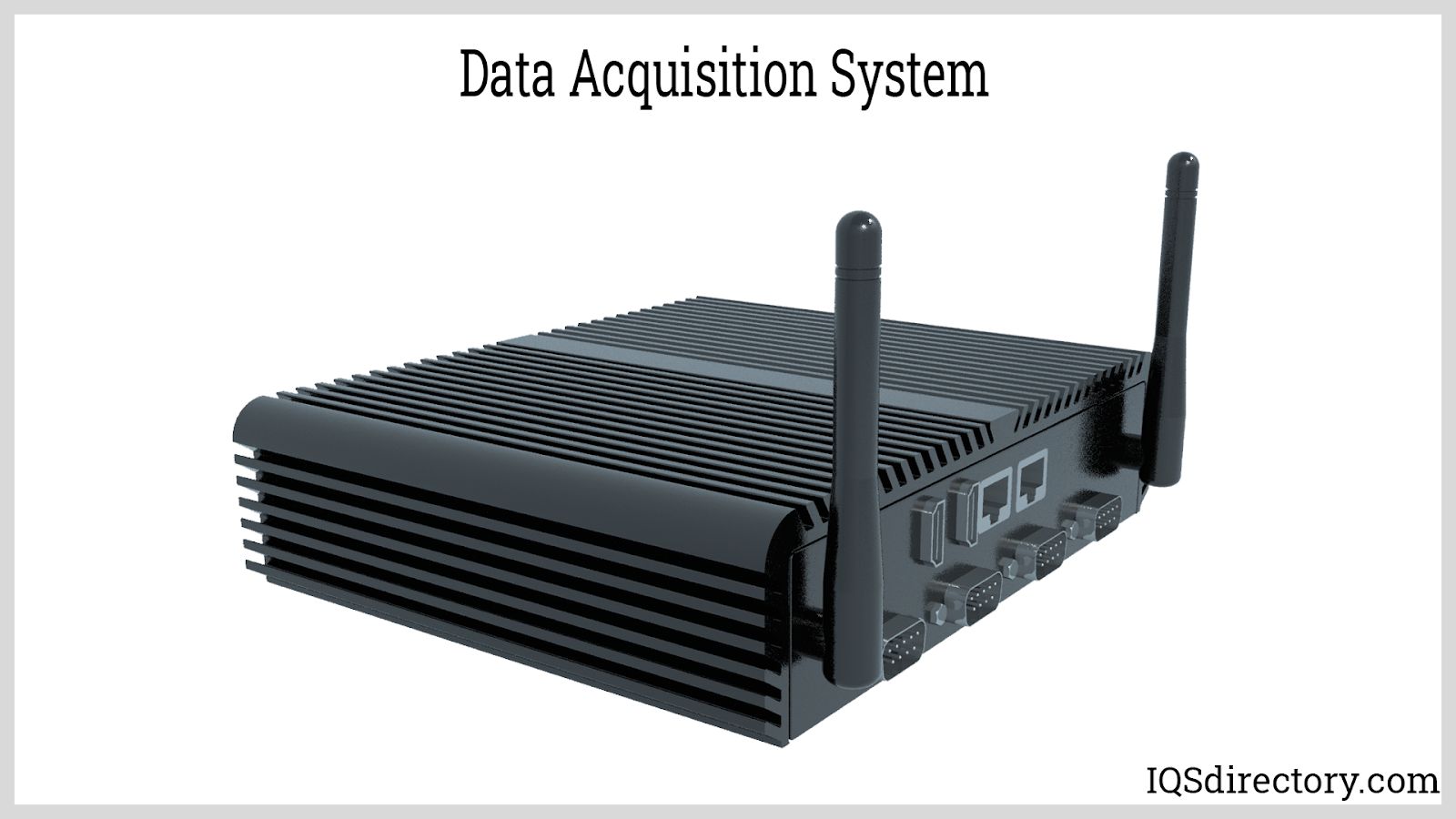
Data acquisition systems enable the creation of customized mixed-measurement systems to meet specific requirements.
Hardware options vary widely, from handling limited data to managing multiple data acquisition systems that work together in a synchronized setup.
Data acquisition systems are employed in critical facilities globally to monitor essential parameters. The data gathered is used to improve efficiency, ensure reliability, and maintain safe operation of machinery.
Measurements are displayed in real-time, allowing technicians to quickly address any issues and make necessary repairs to maintain optimal performance.
Advanced data acquisition systems help companies reduce data duplication and integrate technology, simplifying the analysis of collected data. These systems enable employees to work more efficiently without disruptions that could affect their productivity.
Data acquisition systems automate data entry tasks that were previously handled manually. This automation minimizes errors caused by human input and frees up staff time for other responsibilities.
Reducing the number of interfering programs makes the workflow more efficient. Data acquisition systems provide comprehensive information and ensure accuracy without relying on additional applications.
Data acquisition systems enable users to access and retrieve information from the database for processing and analysis.
A data acquisition system allows for the tracking and monitoring of a company’s processes, helping to identify and address issues more rapidly.
With data capture now automated and objective, human error is minimized, reducing security risks related to data storage, analysis, and management.
Faster data entry reduces memory usage and allows for immediate recovery of information through DAQ systems, making work processes more cost-effective.
Data acquisition systems ensure that a system adheres to design specifications, thereby meeting user requirements. These systems offer testing capabilities to verify product quality before production and provide tools for analyzing defective products.
Data acquisition systems are highly versatile, available as either multi-purpose devices with an all-in-one setup capable of measuring various properties or as single-purpose devices designed for measuring a specific property.
Data collected by a data acquisition system is stored on a computer, making it easy for users to analyze or process the information as needed. Additionally, transferring data to other devices is simplified through computer integration.
Data acquisition systems provide unbiased information that helps improve company performance and enhance economic outcomes.
These systems offer enhanced control over organizational processes and enable rapid responses to any issues. They contribute to increasing efficiency and elevating the quality of products and services.
Data acquisition systems are a process for capturing, storing, analyzing, and manipulating data. The data is acquired through different techniques including voltage signals, current signals, power signals, etc. There are different types of data acquisition systems utilized. Some of them are multipurpose devices with an all-in-one configuration whereas some are single-purpose devices designed for measuring data from single parameters. Data acquisition systems can be applied in a wide variety of industries including the automobile industry, the electronics industry, laser technology, etc. These systems offer so many benefits. They are cost-effective, fast, versatile, and reliable. Data acquisition systems are a very efficient and convenient way of recording data for further analysis. Data acquisition systems not only improve data security since the process of capturing data is now automated, they improve access to data for the users while reducing errors.